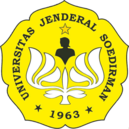Japanese Language Learning Consistency in the Digital Era
Abstract
This research was motivated by the pandemic which resulted in many restricted outdoor activities. The existence of restrictions on outdoor activities caused changes in behavior in the community and had an impact on reducing physical activity. Government regulations to strictly maintain health protocols as well as changing the learning system from face-to-face to virtual, affected the consistency of Japanese language learning in the digital era (new normal). This study is a qualitative descriptive study that aims to determine the consistency of Japanese language learning in the digital era (new normal) and to determine whether interest in learning Japanese has decreased or even increased in the digital era (new normal). The method used in this study is a descriptive qualitative method using a research instrument in the form of a questionnaire distributed using WhatsApp groups and e-mails. The subjects of the research were courses that held Japanese language learning. Data were obtained by distributing questionnaires, both open and closed questionnaires. The number of respondents are as many as 4 courses that open Japanese language learning online. The analyzed data shows that learning at the course remains consistent which means that the interest of Japanese language learner enthusiasts who take part in learning at the course does not change by looking at the percentage result of 100%. However, the next analyzed data got the answer that the learners increased if referring to the table of analysis results which showed a percentage of 75%.
References
Apa Sih Manfaat dan Pentingnya Ikut Tes Bahasa Jepang JLPT? (23 December 2018). Bali Mayantara. URL https://bali.mayantara.sch.id/rilis/apa-sih-manfaat-dan-pentingnya- ikut-tes-bahasa-jepang-jlpt.htm.
Aripin, Ipin. (2018). KONSEP DAN APLIKASI MOBILE LEARNING DALAM PEMBELAJARAN BIOLOGI. Jurnal Bio Educatio. 3(1).
Arikunto, Suharsimi. (2006). Prosedur Penelitian. Suatu Pendekatan Praktik. Jakarta: Rineka Cipta.
Baharuddin, et al. (2015). Teori Belajar dan Pembelajaran. Yogyakarta: AR-RUZZ MEDIA.
Cahya, Harry. (2008). Quantum Asset: Mengembangkan Trilogi Asset Mencapai Hidup yang Berkualitas. Yogyakarta: Kanisius.
Djamaluddin, Ahdar., et al. (2019). BELAJAR DAN PEMBELAJARAN. 4 Pilar Peningkatan Kompetensi Pedagogis. Parepare: CV. KAAFFAH LEARNING CENTER.
Harianto, Aries. (2008). Konsistensi Mediasi Hubungan Indrustrial dalam Perspektif Asas-asas Mediasi. Majalah Ilmiah, 3(2), 89-108.
Hendarita, Yane. (2012). Model Pembelajaran Blended Learning dengan Media Blog. Jurnal Pendidikan Vokasi, 2(2), 2. https://sibatik.kemdikbud.go.id/inovatif/assets/file_upload/pengantar/pdf/pengantar_3.pdf
Leonard. (2013). Kajian Peran Konsistensi Diri Terhadap Prestasi Belajar Matematika. Formatif: Jurnal Ilmiah Pendidikan MIPA, 3(2): 97-104. DOI: http://dx.doi.org/10.30998/formatif.v3i2.116.
Moleong. (2010). Metodologi Penelitian Kualitatif, Bandung: Remaja Rosda karya.
Musfiqon. (2011). Pengembangan Media dan Sumber Pembelakjaran. Jakarta: Prestasi Pustaka.
Nashori, Fuad. (2011). Agar Anak Anda Berprestasi. Yogyakarta: Pustaka Zeedny.
Politeknik Enjiniring Pertanian Indonesia. (20 October 2020). Sistem Pembelajaran Daring, PEPI Terapkan Virtual Learning Environment. URL https://pepi.ac.id/berita/sistem-pembelajaran-daring-pepi-terapkan-virtual-learning-environment/
Survei Lembaga Pendidikan Bahasa Jepang di Indonesia tahun 2012. (n.d). Mayantara. URL https://mayantara.sch.id/artikel/survei-lembaga-pendidikan-bahasa-jepang-di- indonesia-tahun-2012.htm.
Tamimuddin, H. M. (2007). Pengenalan Media Pembelajaran Berbasis Mobile (Mobile Learning). Available on http://p4tkmatematika.org/
Tim Penyusun Kamus, Pusat Pembinaan, dan Pengembangan Bahasa. (1995). Kamus Besar Bahasa Indonesia (2nd ed). Jakarta: Balai Pustaka.
Tim Penyusun Kamus, Pusat Pembinaan, dan Pengembangan Bahasa. (2015). Kamus Besar Bahasa Indonesia. Jakarta: Balai Pustaka.
Yaumi, Muhammad. (2007). The Implementation of Distance Learning in Indonesian Higher Education. Jurnal Lentera Pendidikan, 10(2).
Yeliany, A., et al. (2021). EFEKTIVITAS PEMBELAJARAN JARAK JAUH. Jurnal Inspirasi Manajemen Pendidikan, 9(4). https://ejournal.unesa.ac.id/index.php/inspirasi-manajemen-pendidikan/article/view/41044

This work is licensed under a Creative Commons Attribution-ShareAlike 4.0 International License.
Authors who publish with Jurnal Ilmiah Lingua Idea agree to the following terms:
- Authors retain copyright and grant the journal right of first publication with the work simultaneously licensed under a Creative Commons Attribution License (CC BY-SA 4.0) that allows others to share the work with an acknowledgment of the work's authorship and initial publication in this journal.
- Authors are able to enter into separate, additional contractual arrangements for the non-exclusive distribution of the journal's published version of the work (e.g., post it to an institutional repository or publish it in a book), with an acknowledgment of its initial publication in this journal.
- Authors are permitted and encouraged to post their work online (e.g., in institutional repositories or on their website) prior to and during the submission process, as it can lead to productive exchanges, as well as earlier and greater citation of published work.





















.png)




_.png)


